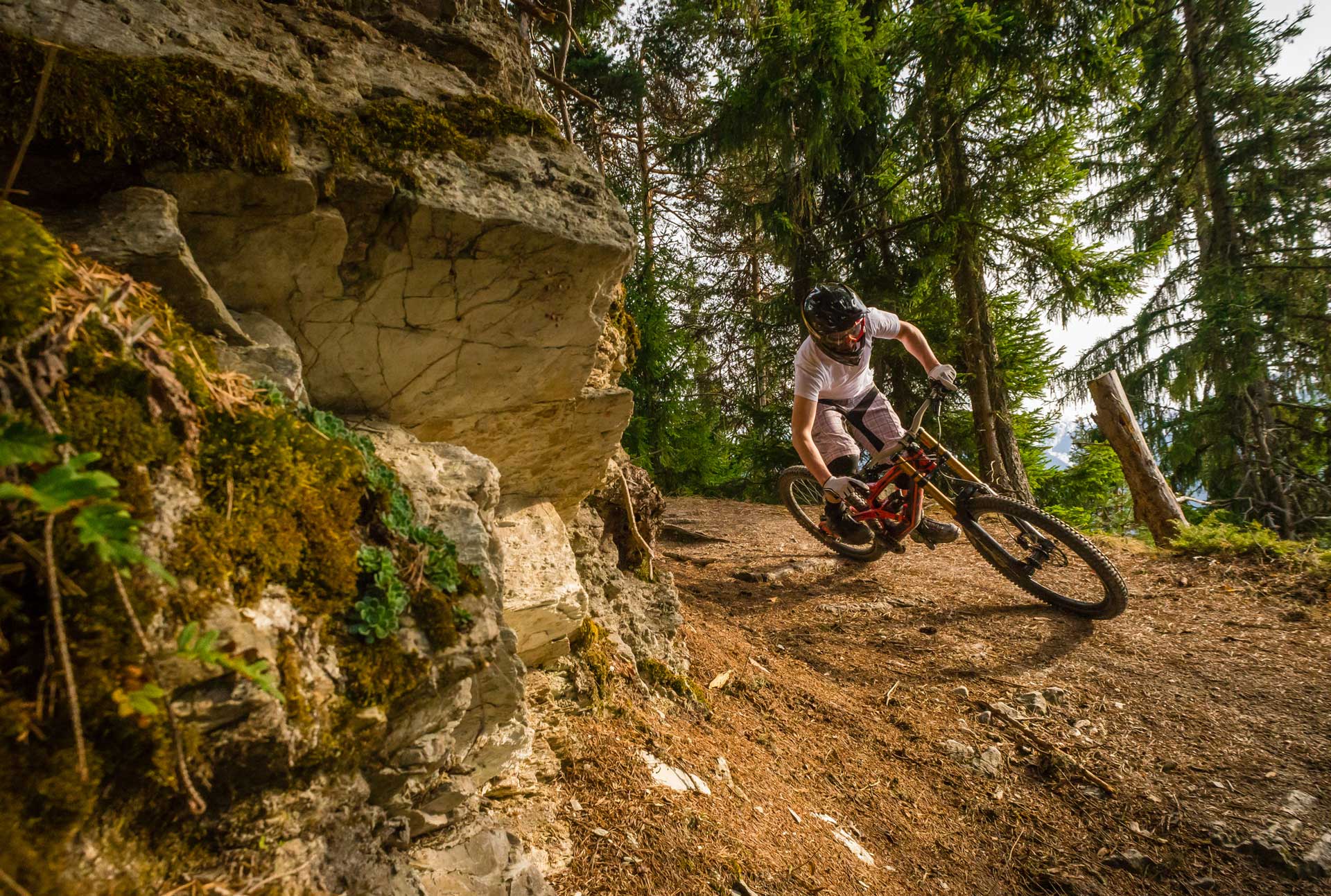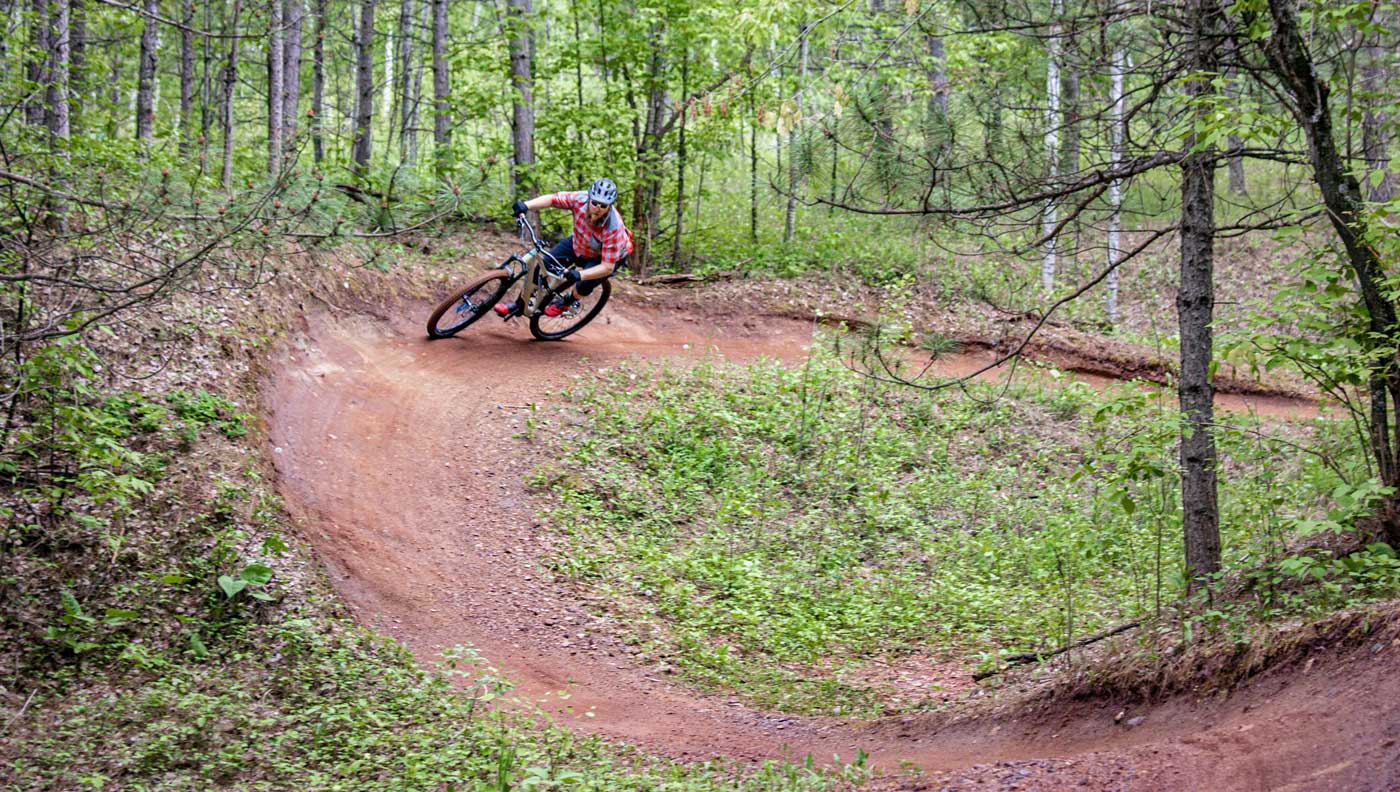You know that old saying, it’s just like riding a bike? Well, it turns out, sometimes riding a bike isn’t as natural and easy as the professionals makes out. In fact, mountain biking can be downright scary and intimidating for beginners. That’s why we’ve compiled our top 10 entry-levels tips to get you out on the trails and shredding in no time. And once you’ve got it, we’re sure you won’t forget it anytime soon.
Without further ado, here’s our top tips for mountain biking beginners.
1) Get Intimate With Your Bike
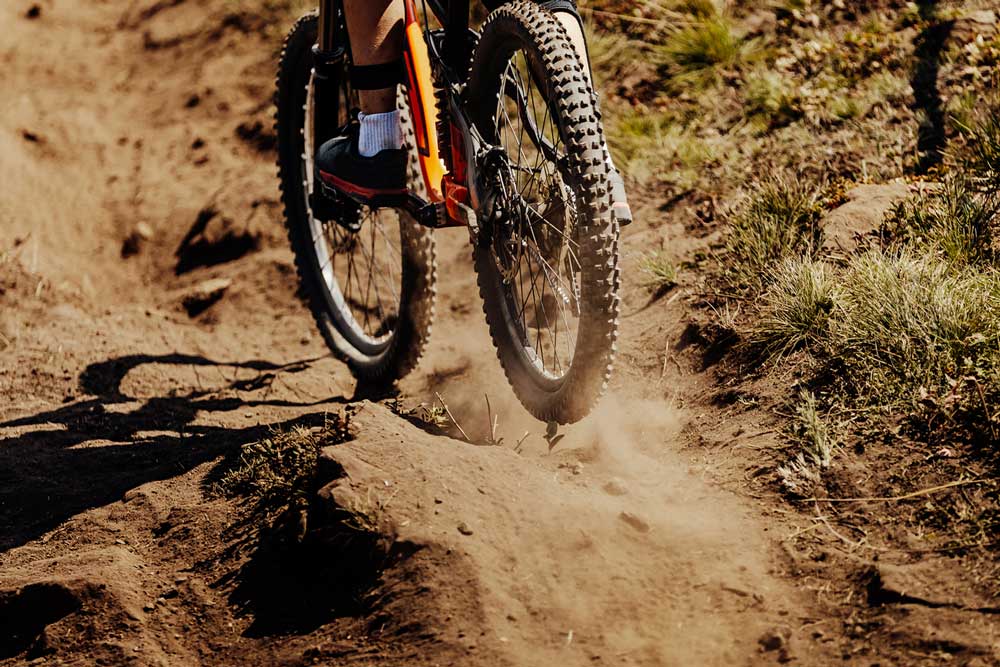
Easily overlooked when you buy or borrow your first bike, having the correct setup for your body will help you in (and out) of the saddle enormously. Ideally, you’ll have a full bike fit before riding but if you haven’t there are a few key points to make sure you get right.
Seat Height
This is a big one. It sounds ridiculous, but even a couple of centimetres can make a difference to your power output and muscle capacity on climbs. You want to ensure that your seat is at the right height to get the full extension of your leg, without overextending your knee. This will ensure you get maximum efficiency out of your legs.
With one pedal down to the ground and the other high, your heel should just touch the bottom pedal with your leg straight (and a micro bend in the knee) while you sit on your saddle. And if you want to get really fancy, your crank (that bit that attaches your pedal to your bike) should be at the bottom of its stroke. When you’re doing this, make sure you don’t have to tilt to one side on the saddle – that means it’s too high.
Suspension and Tyre Pressure
Once your seat feels right, you’ll want to spend a bit of time working out your suspension set up and tyre pressure. If you become familiar with the settings and are able to tune them properly to your weight and the conditions, you can improve surface traction to feel more stable and planted on your bike.
Mountain bike tyre pressures usually ranges from around 22 to 35psi. Overall, this is a fairly small range. If you can find the sweet spot though, you’ll be rewarded with better performance and more confidence. So what factors influence tyre pressure? You’ll want to think about your weight, the tyres you’re using, and the terrain and conditions you’re riding; generally speaking, you’ll also want more air in the rear than in the front as that is where most of your weight will be as you ride. Working this out can be a bit of an art. If you’re unsure, try somewhere in the middle to start and adjust based on feeling – if you’re getting bucked around, you can probably lower your psi. Slipping around in corners? Pump that guy up a bit.
Not everyone will be comfortable working out suspension or tyre pressure alone, and that’s ok! Don’t be afraid to go to your local bike shop and ask them to help you.
2) Body Position
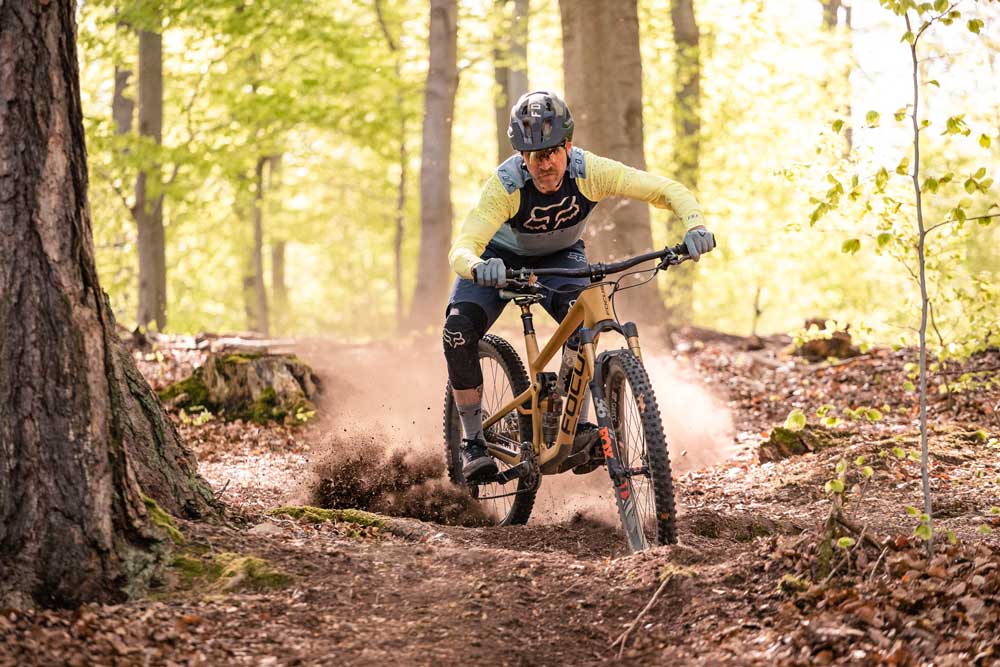
After you’ve crushed the climbs, you want to make sure your body is looking and feeling good on the down. Having a balanced and stable body position is key to maintaining control over your mountain bike as you navigate different types of terrain.
Most importantly, you want to keep your body loose and springy. By doing this, you’ll be able to react to what you’re riding, absorbing bumps and pushing your weight into the bike when necessary. So make sure your arms and legs have a generous bend in them. When you bend into your elbows and knees, it’s like a bit of cheeky extra suspension through rough terrain – trust us, you’ll feel the difference. You can also keep your knees and elbows wide to give you even more stability.
Also lowering your chest and hips towards the bike, with your chin over your stem (the middle of your handlebars), will keep your weight balanced as you descend and will stop you from unweighting the front wheel. Unless you’re just really into wheelies – then be our guest.
So, what do you do with your feet? Good question. Glad you asked. You want to make sure your pedals are level, with your dominant foot forward. Keep your heels dropped on your pedals. By bracing against the pedals, you’ll stay more stable on your bike as you let your body spring through different types of terrain.
3) Look Where You’re Going
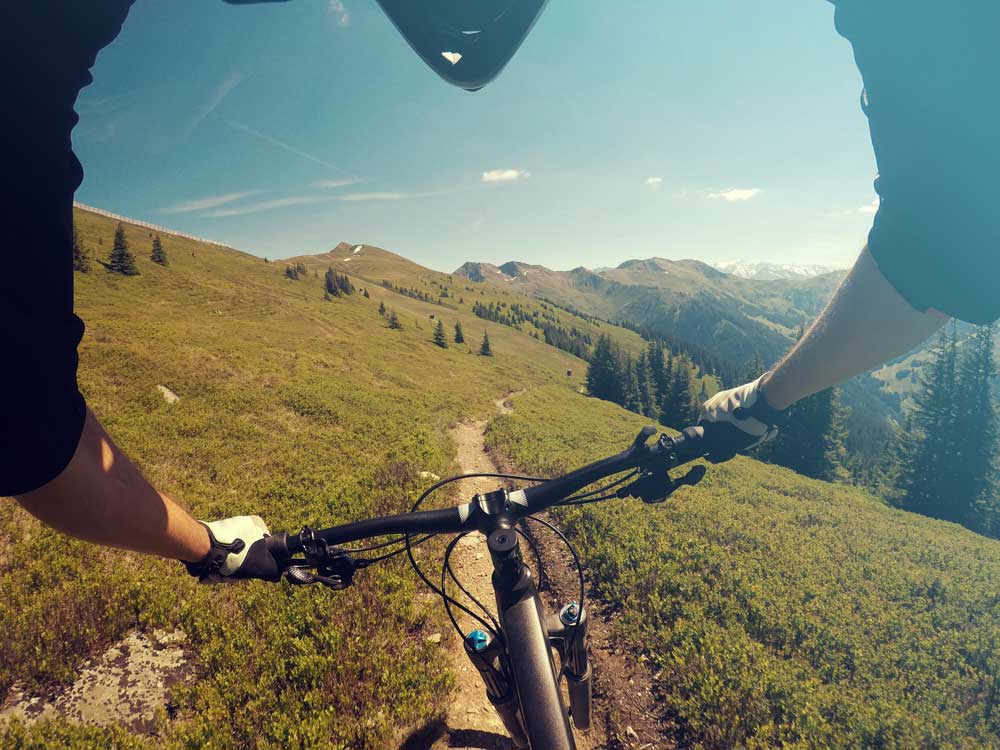
Look where you’re going (it’s important). Ensuring your gaze is forward and ahead of you on the trail will make anticipating the terrain waaay easier. Your body tends to go where your eyes are looking, so stay focused on the trail ahead and not on the ground under your front wheel. This applies when you’re riding downhill or crushing the climb. Looking ahead will not only help you anticipate what’s coming up, but will help improve your balance.
4) Momentum Is Your Friend
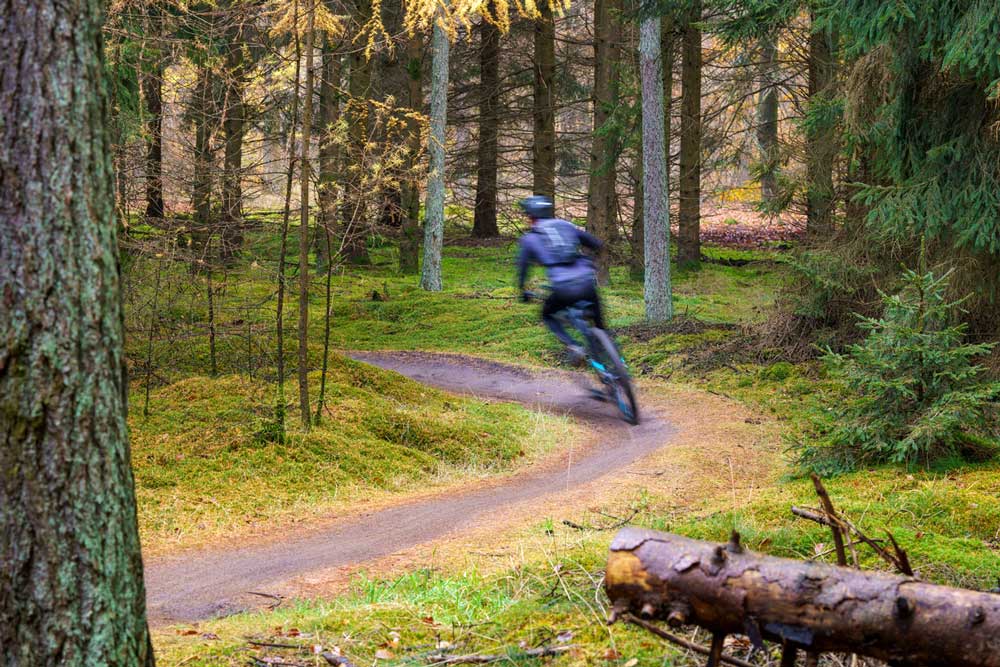
When you start out mountain biking, it can be daunting to go a little faster than you’re comfortable with and it’s true that a lot of us will over use our brakes to begin with. To really improve your riding once you’ve got the very basics down though, you’ll definitely want to let momentum do its thing.
A lot of beginner mountain bikers will crash, not because they’re out of control, but because they don’t have the momentum to carry them over or through features and end up losing balance. If you can let off the brakes a bit as you come up to a more technical section or exit a corner, the momentum will help you through tricky rock sections and corners with confidence. Not to mention help you when you’re learning drops and jumps (when you’ve built the skills to do so).

